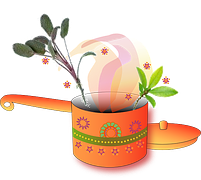- Reduced price
- Out-of-Stock



Its intense aroma and appearance lie somewhere between thyme and savory.
It belongs to the same family as the thyme found in our regions, but it is primarily cultivated and consumed on the other side of the Mediterranean.
 Delivery
Delivery
Mondial Relay
 Returns
Returns
See conditions
 Payments
Payments
100% secure
Delivered in a resealable pouch
Belonging to the same plant family as thyme and savory, the taste of zaatar leaves naturally reminds one of these two herbs, but with even more fragrance and a slightly more lemony twist.
It is commonly used in many Middle Eastern dishes, but it is also made into herbal teas rich in beneficial properties.
Feel free to use it in the same dishes as its two cousins, thyme and savory.

Origin: Morocco
Scientific name: Satureja hortensis
Nicknames: Greek oregano, Syrian marjoram, Aleppo thyme, African oregano
In Arabic, the word "zaatar" means "thyme." In fact, when referring to zaatar, it can mean two things:
- 1°) The plant, especially its leaves, which you can find here, whose flavor and appearance lie between thyme and the savory we know in Europe.
- 2°) By extension, it is also the name of a blend that contains "zaatar" leaves or thyme, along with sesame and sumac.
Zaatar is a semi-creeping plant, very hardy, drought-resistant, and loves warm, sunny conditions. It grows to a height of 30 to 60 cm, and small white flowers, which are also edible, appear in early summer.
***
Data sheet
Reference: 050721
Reference: EPI2301004
Reference: EPI230115
Reference: poivre5baiesE
Reference: poivrecitronne
Reference: 12N7952502
Reference: cardamomeM
Reference: 20822401
Reference: EPI230206
Reference: apache
Reference: 208029701
Reference: 021122
Reference: 00036306-0001
Reference: 2M6273801
Reference: ecorceorangeamere
Reference: kenya
Reference: paprikafumé
Reference: 30204501

Its intense aroma and appearance lie somewhere between thyme and savory.
It belongs to the same family as the thyme found in our regions, but it is primarily cultivated and consumed on the other side of the Mediterranean.